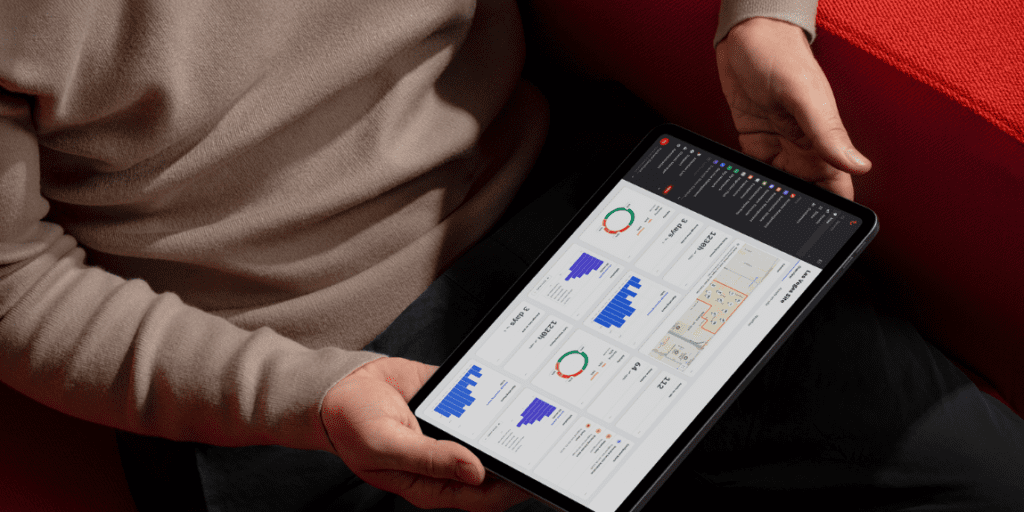

Construction companies often ask when is it a good time to embark on their digital journey. The usual answer of course is something along the lines of ‘no time like the present’ but every so often, a business comes along that is so far down the line, they become a standard bearer for what can be achieved.
Hong Kong-based Gammon Construction undoubtedly fits that bill. As executive director and chief technology officer Paul Evans says: “Our journey into digital transformation has been ongoing for many years.”
According to Evans, every project Gammon works on is digitally driven from start to finish. “We mandate BIM modeling for all our projects big and small supported by our BIM modeler teams based on our projects in Hong Kong and in our PRC Shenzhen central team. But it doesn’t stop there.
“These BIM models follow the entire project lifecycle from initial concept design through into as-built models that can be used in the operation and maintenance phase of our projects, and also integrating with other digital solutions used to monitor and manage the construction process,” says Evans. “They also support offsite manufacturing, which is now a crucial component in Hong Kong construction alleviating the challenges of an aging workforce, lack of new talent entering the industry, and high construction costs.”
While Evans has played a major role in the digital transformation since he joined Gammon in early 2019, the road was already well-established. And that has, effectively, enabled him to put the foot on the pedal and accelerate the process.
And what a transformation that has been. According to Evans, this has been as much a culture-driven transition as a technology-led development, illustrating the critical symbiosis between innovation and people.

“A few years ago, we launched an internal business improvement initiative called Project Agile to enhance efficiency and predictability in our business operations and projects,” says Evans. “One area of focus was equipment utilization. Historically, our fleet operations were managed using paper-based processes with limited data visibility.”
Using IoT devices to build the company’s understanding and grasp on what was happening at the machine and jobsite level, the impact was significant.
“We were working on a major infrastructure project where we used multiple diesel generators due to a lack of utility power,” Evans says. “Sustainability is a key focus for us, so we wanted to reduce diesel consumption.
“By tracking generator usage through telematics, we gathered data that revealed inefficiencies,” he says. “Initially, some stakeholders resisted the data, insisting everything was operating efficiently.
“However, as we collected more insights, the evidence became undeniable.”
So undeniable in fact, that anyone within the company who was inclined to doubt the data was invited to air their concerns and run it against the numbers.
“Driving change required executive leadership,” says Evans. “We introduced a system where anyone who doubted the data was invited to present their case to the CEO and executive committee.
“Initially, some stakeholders resisted the data, insisting everything was operating efficiently. However, as we collected more insights, the evidence became undeniable.”
“We even had a league table to track dashboard engagement,” he adds. “If someone wasn’t checking their project data, they had to explain why.
“This approach quickly shifted the culture, and today, data-driven decision-making is deeply embedded in our operations.”
That success, says Evans, is because of Gammon’s ability to demonstrate it can deliver on project deadlines and budgets through its project portfolio. And that delivery is fundamentally premised on the systematic approach to data and insights that drive the business.

Take safety as an example. Anyone acquainted with construction will know that incidents on the jobsite can have life-changing personal impacts. They also have the potential to impact timelines and cost.
But Gammon is already leveraging AI to gradually reduce jobsite risk. “We introduced Gambot, our AI-powered chatbot, which helps frontline workers record and analyze safety observations,” says the Gammon CTO. “For example, we require our supervisors, engineers, and managers to submit at least two safety dynamic risk assessment observations per day.
“Often, startups have great technology but lack the industry expertise to apply it effectively. That’s where we step in.”
“Initially, analyzing this data was a manual process, but we’ve been working on training AI models to process and categorize observations,” says Evans. “Our goal is to identify trends, improve reporting quality, and eventually predict potential safety risks before they occur.”
It’s part of a culture where innovation is valued as evidenced by its annual innovation competition which is open to all staff, subcontractors and suppliers and has been in place since 1999. Indeed, Gambot was a submission to the 2017 competition and has since come on board as the company’s mobile virtual assistant on the jobsite.
Evans anticipates even more AI infiltration into everything the company does. He cites the role of computer vision on jobsite safety and site monitoring, the use of smart IoT devices to detect safety risks in real time and the deployment of AI for document management and legal tracking, with plans to expand its use in tendering and contract analysis.
The use of AI even extends towards Gammon’s co-creation efforts with partners and particularly startups.
“We’ve worked closely with startups to co-develop solutions for everything from design and safety to productivity and sustainability,” says Evans.“Often, startups have great technology but lack the industry expertise to apply it effectively. That’s where we step in.
“For example, we partnered with a UK-based concrete maturity sensor startup,” he says. “Our CEO met the founders during a visit to Cambridge University, and we brought them to Hong Kong to refine their technology and navigate government approvals.
“This approach quickly shifted the culture, and today, data-driven decision-making is deeply embedded in our operations.”
“Another example is our collaboration with Ampd Energy, a Hong Kong-based startup specializing in lithium battery technology for construction sites,” he says. “We co-developed the site use-case with a battery-powered alternative to diesel generators, significantly reducing carbon emissions.
Today, Ampd Energy has expanded globally to markets including the UK, Singapore, Australia, and the Middle East.
“Our approach provides startups with access to real-world construction environments to test and refine their solutions,” says the Gammon leader. “In turn, we gain early access to cutting-edge technologies that improve our operations.
It all adds up to a collaborative, co-creation-driven mentality that is enabling Gammon to effectively play its part in eliminating downtime through safer jobsites, reducing emissions and data-driven efficiencies.
And it is, says Evans, all down to that step-by-step, systemic approach to data.
“We have partners who play a key role in enabling data-driven transformation in our industry,” he says. “Having access to real-time insights is invaluable, and collaboration is essential to moving the industry forward.”
Paul Evans was one of our keynote speakers at Trackunit Next 2025 and this interview is adapted from his contribution on February 5. You can see what he said in full here.

